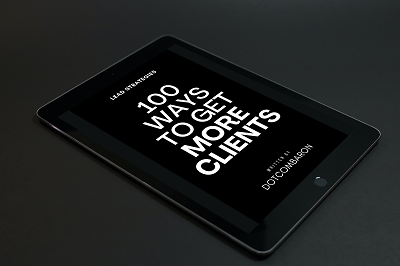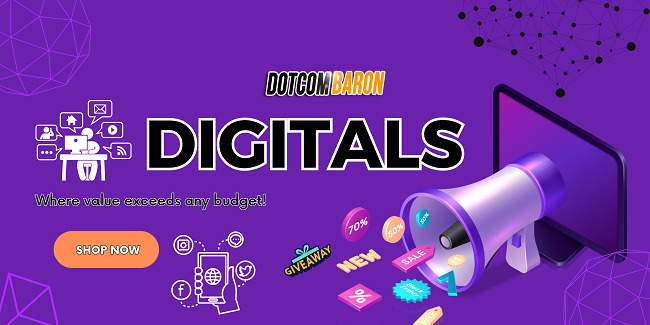How can businesses convert one-time buyers into repeat customers?
This article explores the power of loyalty programs in fostering customer retention and increasing lifetime value.
Discover the strategies for boosting loyalty, the potential of free and paid programs, and the latest industry trends.
Learn how to measure success through key performance indicators and navigate the journey of starting your own loyalty program.
Harness this powerful tool and unlock business growth today.
Why Bother?
- Loyalty programs can significantly increase customer retention and lead to substantial profit increases.
- Loyalty programs should focus on providing rewards and incentives to encourage brand loyalty.
- Paid loyalty programs, when combined with predictive analytics, can build deeper customer relationships and double repeat spend probability.
- Partnering with brands in a co-existing niche and incorporating a social cause aspect can differentiate a loyalty program and align with customer preferences.
Understanding the Power of Loyalty Programs
The power of loyalty programs lies in their ability to transform occasional customers into repeat customers, thereby maximizing the customer lifetime value and driving significant profit increases for businesses.
These customer retention strategies are instrumental in liberating businesses from the constant struggle of acquiring new customers, allowing them to focus on nurturing existing relationships.
The benefits of loyalty programs are manifold. They not only foster brand loyalty but also provide a platform for businesses to understand their customers better.
Through personalized rewards, companies can cater to individual customer preferences, further enhancing their experience and ensuring their continued patronage.
These programs also leverage predictive analytics, helping businesses anticipate customer needs and behavior. This foresight allows businesses to make informed decisions, optimize their offerings, and stay ahead of the competition.
Moreover, loyalty programs provide opportunities for businesses to align themselves with social causes, thereby resonating with customers who value corporate social responsibility. Social cause partnerships not only enhance a company’s image but also provide customers with a sense of gratification and purpose, further strengthening their connection with the brand.
Strategies for Boosting Customer Loyalty
Implementing five key strategies can significantly boost customer loyalty, strengthening the effectiveness of your loyalty program and ensuring a higher rate of repeat customers. These strategies leverage the benefits of personalization, build emotional connections, utilize social media, analyze customer preferences, and provide a seamless customer experience.
- Benefits of Personalization: Personalize your loyalty program to cater to individual customer preferences. This could mean offering rewards based on past purchases, or tailoring communications to each customer’s specific interests. This strategy not only makes customers feel valued, but also encourages them to continue engaging with your brand.
- Building Emotional Connections: When customers feel emotionally connected to a brand, they are more likely to stay loyal. This can be achieved by showcasing your brand’s values, engaging with customers on a personal level, and providing exceptional customer service.
- Leveraging Social Media: Use social media platforms to promote your loyalty program and engage with customers. Post regularly about program benefits, feature members, and respond quickly to queries or complaints. This keeps your brand at the forefront of customers’ minds and fosters a sense of community.
- Analyzing Customer Preferences: Use data analytics to understand your customers’ buying behaviors and preferences. This information can be used to improve your product offerings, personalize customer interactions, and make your loyalty program more appealing.
- Creating a Seamless Customer Experience: Make sure that every interaction a customer has with your brand is positive, from browsing your website to redeeming loyalty points. This includes ensuring your loyalty program is easy to understand and use, and that customers feel rewarded for their loyalty.
Exploring Paid Loyalty Programs
In the realm of customer retention strategies, paid loyalty programs emerge as a powerful tool to deepen relationships and enhance repeat purchases. The benefits of paid programs are manifold and they offer a strategic advantage by leveraging data-driven insights to offer highly personalized experiences.
By transitioning from free to paid loyalty programs, businesses can create a sense of exclusivity, encouraging customers to invest in their relationship with the brand. Such a shift necessitates a careful analysis of customer behavior and preferences, thereby paving the way for more personalized loyalty schemes.
Paid loyalty programs also offer a platform for businesses to align their services with socially conscious causes. A brand’s commitment to a social cause not only resonates with the values of the modern customer but also differentiates it from competitors. It adds a layer of emotional appeal, turning a mere business transaction into a meaningful interaction that contributes to a larger cause.
Furthermore, data-driven loyalty programs allow businesses to understand their customers better, predict their needs, and tailor their offerings accordingly. Data analytics can track customer behavior, purchase patterns, and preferences, allowing businesses to refine their strategies and deliver targeted, personalized experiences.
Current Trends and Key KPI’s in Loyalty Programs
Several recent trends and key performance indicators (KPIs) are shaping the future of loyalty programs, making them an indispensable tool for businesses seeking to boost customer retention and engagement.
One key trend is the increasing importance of social cause in loyalty programs. Modern consumers want to engage with brands that care about the world beyond profit. Brands are now integrating social responsibility into their loyalty strategies, offering customers opportunities to contribute to causes they care about.
Another significant trend is partner collaboration. Brands are teaming up, offering cross-branded rewards and experiences, enhancing the value of their respective loyalty programs. This approach not only expands the range of rewards but also reaches a broader customer base.
Personalization strategies too have gained immense prominence. Brands are leveraging customer data to tailor their loyalty programs, offering rewards and experiences that align with individual preferences and behaviors. Such personalization significantly boosts customer engagement and loyalty.
Finally, multi-channel engagement is becoming increasingly important. Brands are reaching customers across various platforms, from mobile apps to in-store experiences, ensuring a seamless and integrated loyalty experience.
Key KPIs for measuring program performance include:
- Customer Retention Rate: Measures the proportion of customers who remain loyal over time.
- Redemption Rate: Evaluates the extent to which customers use their loyalty rewards.
- Participation Rate: Assesses the percentage of customers who actively participate in the loyalty program.
- Repeat Purchase Rate: Tracks the number of customers making repeat purchases, indicating the program’s success in driving customer loyalty.
Incorporating these trends and KPIs into your loyalty program can help create a compelling, dynamic, and effective strategy that turns every customer into a repeat customer.
Steps to Launch Your Loyalty Program
Launching a successful loyalty program requires five crucial steps:
- Conceptualization: Understand your target audience – the millennials, their preferences, their loyalty drivers, and how your brand can meet those needs. Use this knowledge to design a program that is engaging and rewarding. Gamification techniques can be particularly effective at this stage, turning the customer experience into a fun, engaging process that encourages repeat purchases.
- Design and implementation: Implementing technology is critical in this phase. Use a digital platform to manage your program, leveraging customer data to personalize rewards and offers. Partnering with influencers can boost your program’s visibility, appeal, and credibility. An engaging mobile app or a user-friendly website can serve as the perfect platform for your loyalty program.
- Launch and promotion: Promote your program aggressively. Use social media, email marketing, and even traditional channels to create buzz about your program. Incentivize sign-ups and referrals to gain momentum quickly.
- Measurement and analysis: Measure the success of your program by tracking key metrics such as repeat purchase rate, redemption rate, and customer engagement.
- Continual improvement: Lastly, ensure continual improvement. Regularly review and adjust your program based on customer feedback and data analysis. Keep your program fresh and exciting by regularly introducing new rewards or challenges. Remember, a successful loyalty program is not static – it evolves with your customers and your business.
Frequently Asked Questions:
What Are Some Common Mistakes to Avoid When Implementing a Loyalty Program?”
Common mistakes in loyalty program implementation include flawed program design, imbalance of rewards, lack of customer engagement, ineffective program promotion, and failure to incorporate customer feedback. Avoid these to ensure your program’s success.
How Do You Measure Customer Satisfaction Within a Loyalty Program?”
To measure customer satisfaction within a loyalty program, utilize satisfaction metrics and conduct satisfaction surveys. Collect feedback regularly and assess reward effectiveness for program adaptability. Ensuring customer satisfaction is crucial for a successful loyalty program.
How Can a Loyalty Program Positively Affect the Brand Image and Reputation?”
A loyalty program enhances brand image and reputation through positive program perception, enticing reward appeal, and strong brand association. Promoting such programs aids in customer retention, thereby bolstering the brand’s standing in the market.
How Can Small Businesses or Startups Effectively Implement Loyalty Programs With Limited Resources?”
Small businesses can effectively implement loyalty programs by focusing on strategic program design, careful reward selection, clear program communication, digital implementation, and fostering customer engagement, even with limited resources.
Can Loyalty Programs Be Implemented in B2B Businesses and How Might They Differ From B2C Loyalty Programs?”
Yes, loyalty programs can be implemented in B2B businesses, albeit with a more personalized, strategic approach due to the unique B2B rewards structure and challenges. B2B loyalty programs differ from B2C in their complexity and customization.
Conclusion
In summary, loyalty programs present a strategic tool that businesses can employ to augment customer retention and increase CLV.
By integrating predictive data analysis, offering diverse reward schemes, and continually evaluating success through KPIs, these programs can turn occasional buyers into loyal customers.
A 2019 study revealed that customer retention rates were 5% higher for businesses with loyalty programs, underscoring their potential in driving business growth.
Therefore, investing in a well-structured loyalty program is a proven strategy for long-term success.








